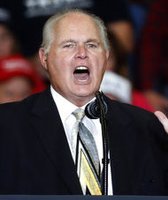Stand up for the facts!
Our only agenda is to publish the truth so you can be an informed participant in democracy.
We need your help.
I would like to contribute
The day before the Iowa caucuses, presidential candidates went on the Sunday talk shows to make last-minute attacks on rivals and defend their own records. But their statements weren’t always accurate.
On Meet the Press, Texas Sen. Ted Cruz inaccurately attacked Republican frontrunner Donald Trump on his health care proposal, saying that Trump was more like a Democrat than a Republican when it comes to health care policy.
Marco Rubio, considered to be surging into the top tier in the GOP primary, defended his work on immigration legislation in Congress. But he cited an inaccurate number, claiming that illegal immigration has been on the rise since his election. Actually, it’s declined.
Cruz on health care
Cruz focused his attack on Trump by comparing Trump’s health care position with those of Democrats Hillary Clinton and Bernie Sanders.
Sign up for PolitiFact texts
"Donald Trump and Hillary Clinton and Bernie Sanders have the identical position on health care," Cruz told Meet the Press host Chuck Todd. "Which is they want to put the government in charge of you and your doctor."
That’s not accurate. His claim rates False.
Trump, Clinton and Sanders all seem to support one particular health care policy: allowing the government to negotiate drug prices. Beyond that specific proposal, however, the three candidates’ overarching positions on health care are not at all "identical" and, one could argue, contradictory.
Sanders proposes a universal health care under a single-payer system, which he calls "Medicare for all."
"As a patient, all you need to do is go to the doctor and show your insurance card," the proposal reads. "Bernie’s plan means no more copays, no more deductibles and no more fighting with insurance companies when they fail to pay for charges."
To pay for the $1.38 trillion plan, Sanders is proposing a 6.2 percent payroll tax, a 2.2 percent income-based premium tax and a slew of taxes for higher income households. Sanders argues that a single-payer system would give the government leverage to trim administrative costs and drug prices. But it’s not clear those tax increases and cost reductions would cover the costs of his plan.
Clinton, meanwhile, wants to defend President Barack Obama’s 2010 landmark health care law, also called Obamacare, from efforts to repeal it. She also wants to lower the costs of deductibles, copays and prescription drugs.
Specifically, she proposes exempting three doctor's visits per year from deductibles and providing refundable tax credits for those with excessive out-of-pocket expenses.
Years ago, Trump voiced support for a single-payer plan. But as a 2016 presidential candidate, his position has been a full repeal of Obamacare and opposition to a single-payer plan. His comments over the past few months suggest a grab bag of sometimes contradictory ideas.
Trump has suggested a health care system in which insurance companies deemed financially stable can offer plans across state lines. He’s also advocated for the government to negotiate with hospitals and drug companies for lower prices and to provide coverage for lower income Americans.
"We're going to work with our hospitals. We're going to work with our doctors. We've got to do something," Trump said in an interview on Sunday. "But that's not single payer and as far as Obamacare is concerned, one of the staples of my speech — and you can ask any of my many supporters — is repeal and replace Obamacare. It's a disaster."
Rubio on immigration
Addressing an issue that has dogged his candidacy, Rubio again defended his involvement in a 2013 failed bipartisan immigration bill. He argued that his participation was simply an attempt to solve a problem that was getting worse.
"Look, I tried to fix the problem," Rubio said on Meet the Press. "This is a real problem. And where are we today? We are worse off today than we were five years ago. We have more illegal immigrants here. We have two unconstitutional executive orders on amnesty. I went to Washington to fix a problem."
The data doesn’t show increasing levels of illegal immigration. His statement rates False.
A July 2015 report from the Pew Research Center found that the unauthorized immigrant population has been stable for half a decade. The number of illegal immigrants living in the United States has hovered around 11.3 million, with very little fluctuation, between 2009 and 2014, the latest year available. The illegal immigrant population peaked at 12.2 million in 2007.
The illegal immigrant population has been stable because the number of new immigrants is about equal to the number of those living in the United States who are deported, leave on their own, or die.
Pew also found that the number of illegal immigrants from Mexico, in particular, has been on the decline — going from a peak of 6.9 million in 2007 to 5.6 million in 2014.
Why the decline? It’s likely demographics, experts say. The birth rate in Mexico has fallen steadily since at least 1990. Marc Rosenblum at the nonpartisan Migration Policy Institute said that translates into fewer people coming into the workforce.
Apprehensions at the border suggest fewer people are trying to sneak into the country. Data from the U.S. Border Patrol show a drop in total apprehensions of about 40 percent since 2009. It used to be border agents stopped around a million people coming in from Mexico per year. Last year, it was about 188,000.
More surveillance, stiffer penalties and more barriers at the border have had the intended effect, Rosenblum said.
Our Sources
See fact-checks for sources.













































